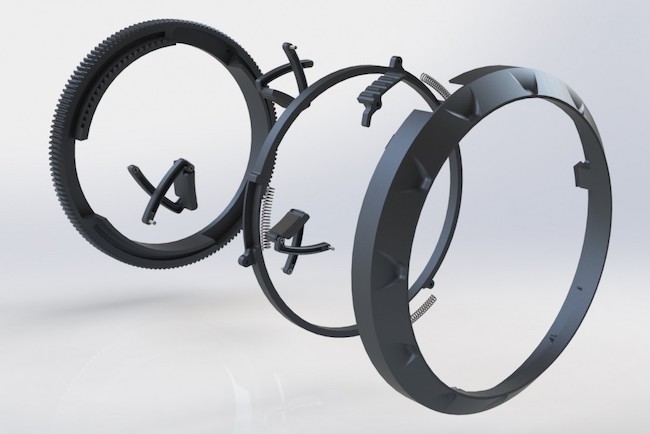
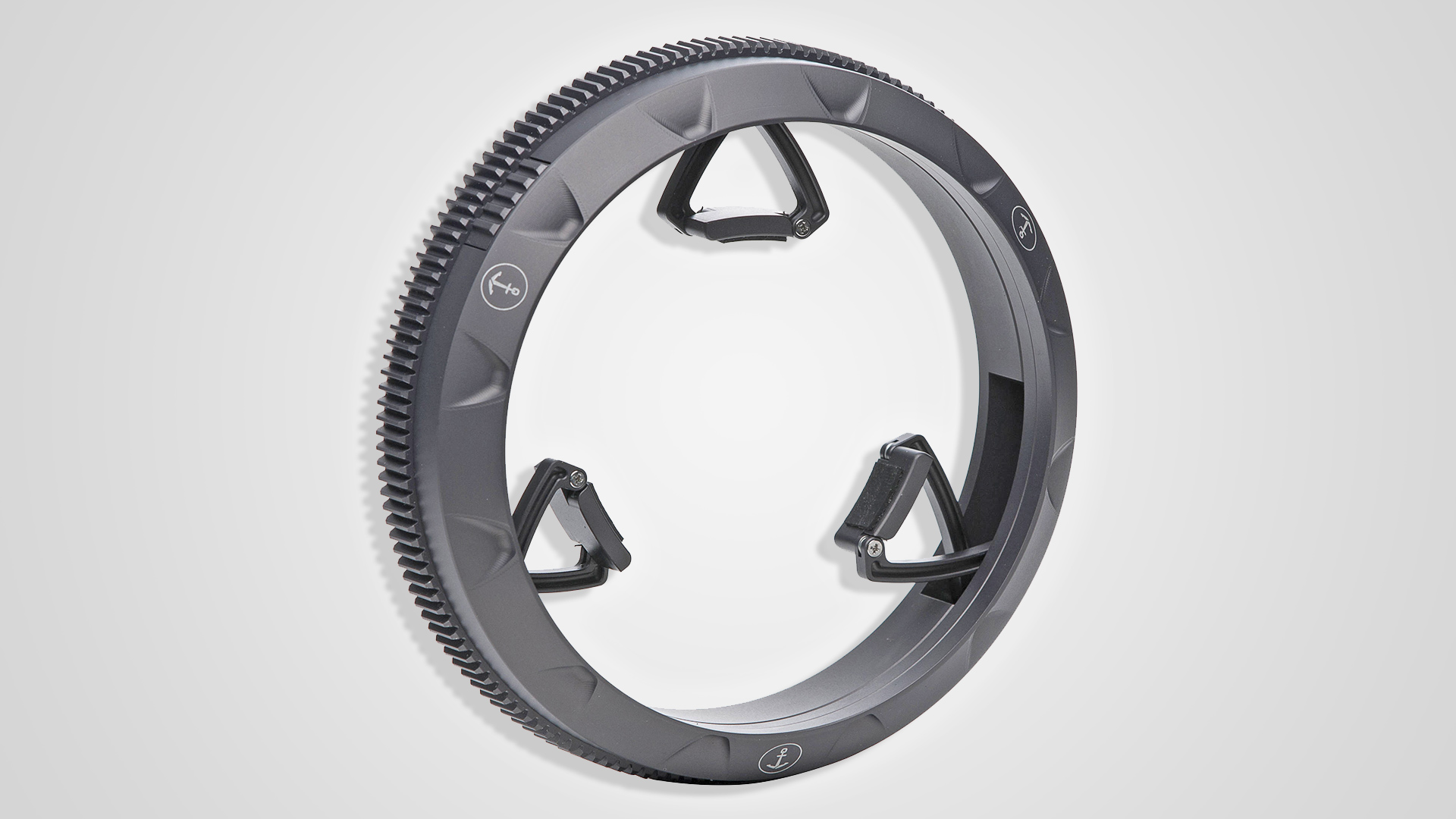
Review: Precision focus is not an easy thing to do with stills based glass. But the Broken Anchor Zero system promises to bring consistency across your different lenses in a very easy to use system. Kevin Luiz investigates. We think he likes it!
Overview
This thing expensive for what it is, but boy do I love it! Truly this is a funny way to start off a review, but sometimes its best to not beat around the bush. I’ve been working with the Broken Anchor Zero Gear now since early January, and let me tell you it’s a beautiful product, to the point I actually want to own two! Oddly enough, owning two sort of defeats its purpose, unless of course you’re mounting two on the same lens for zoom and focus, but I’ll get into that later. I digress.
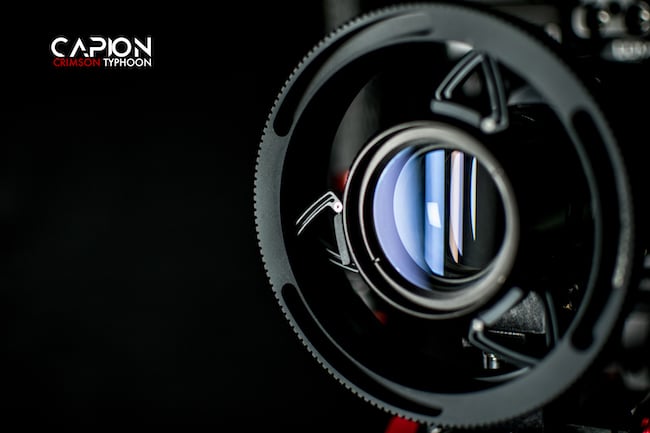
When I purchased the Nucleus Nano system that I recently reviewed, I determined I needed a really nice gear set since I mainly operate with modern and vintage Nikkors that are not cine oriented. I remember seeing CineGear coverage some time ago about a very unique lens gear that had scissoring feet, essentially allowing you to clamp onto different diameter lenses with ease. This stuck in my head for awhile, so I started to research this more and rediscovered the Zero Gear. When I bought one, I had it attached to a lens I’m working on with my machinist, and he marveled at how simple, yet genius the design was.
Specifications
Broken Anchor really have cornered the market with this unique design as there is nothing else like it. It’s made of aircraft grade aluminum with a standardized outer diameter of 125mm and possess a 0.8 for its gear teeth with a 0.32 pitch. The really incredible element to this product is that it has three scissoring feet that can quickly extend in and out, allowing you to clamp onto a lens with a diameter between 60 – 92mm and roughly 2.25lbs of force. The unit comes with a set of pads installed on the feet to prevent from slippage once installed.
The install, and uninstall process occurs in a matter of seconds (with the caveat of alignment). The whole concept and marketing pitch is that it’s the only gear you’ll ever need. Just swap and go! In theory, it’s a nice thought, but sometimes it’s just easier to have these gears permanently mounted on the lens as this is one less thing you need to worry about fiddling with no matter how quick it is. The upside to this however is that all of your lenses become a standardized diameter and aligns perfectly with your motors or follow focus. This way you’re not constantly fiddling with aligning your rigging.
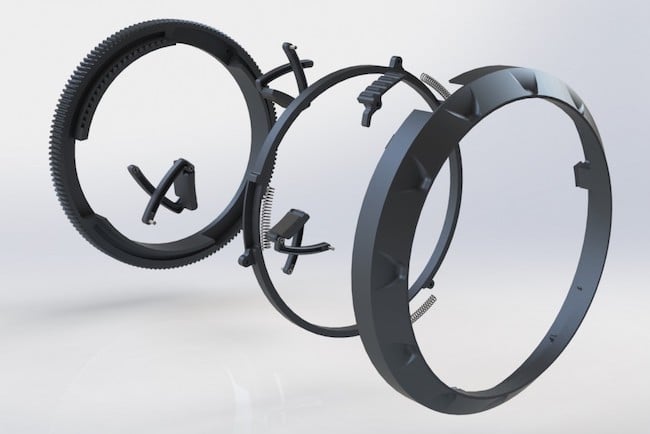
A Set of Perks
Having this 125mm standardized outer diameter also comes with a set of perks. Due to its large form factor and increased gear ratio, the focus throws are indirectly increased, as your motor has a larger area to travel across the gear’s outer diameter. This leads to higher precision pulls, and gives you a mechanically uniformed experience. I’ve found even wrapping my fingers on the gear without a motor, or follow focus results in smoother pulls. The other perk is that because of the enlarged outer diameter, your motor’s torque effect is dampened, limiting the shifts that can occur on your lens.
Without a positive lock on your system, some of your lenses can exhibit shifts as the torque is applied to a standard gear. Since this Zero gear is further away from the center of gravity (the lens), there is a dampening effect, the movement being dispersed through the frame of the Zero and its inertia distributed down through the feet. I’ve witnessed this first hand when applying extra voltage to my Nano motor paired with the supplied gear zip tie, and then replacing it with the Zero.
The Pitfalls
Like all products, the Zero does come with a downside however. I’ve noticed that you really need to spend a few extra seconds aligning the gear to a physical line on the barrel of your lens. The machined feet have a slight play in them, having a clearance of 0.002” when clamped, so tightening further with manufacturing tolerances makes this difficult to achieve. So if you carelessly slap the gear on the lens, the gear can be applied off its center axis as it turns, appearing askew.
To remedy this, instead of placing the gear in the center of the focusing module, simply bring the gear’s feet to the edge of the barrel on your lens, and use that line as a marker for your gear’s feet. This will serve as a control for applying the gear, and make sure your Zero gear is moving properly. The other thing to be aware of is if your camera isn’t on a rig with a raised base plate, and you set the camera down on a surface, be sure to inspect the gear again before use as it could have shifted its position by a millimeter of so. I find this to especially be the case since I have opted to remove the included pads on the feet, stripping them down to metal.
Conclusion
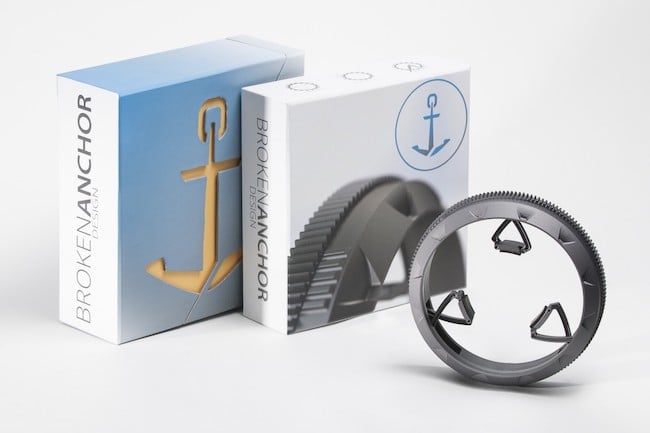
As I stated earlier, there’s no beating around the bush as to how expensive this unit is relative to its product category. I’ve done some digging and according to the product designer, the price is not arbitrary as it is linked to manufacturing costs. Regularly priced at $299 it’s probably the most expensive gear you’ll ever buy. That said, Broken Anchor Design occasionally offers sales at a more modest cost of $209 per unit. For what it can offer, and the ingenuity behind it, I believe it to be a fair offering on the market. Simply put, there’s nothing else like it, and the ticket price is worth the cost of admission.
In conclusion, I absolutely love this gear as it offers so much and really results in a seamless experience. When I have the opportunity, I’ll be sure to update with some samples in the comments below. Have you used the Zero gear? Share your thoughts below!
Tags: Production


Comments